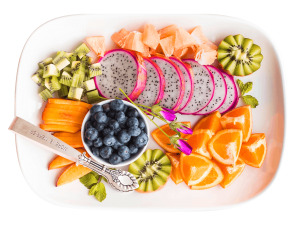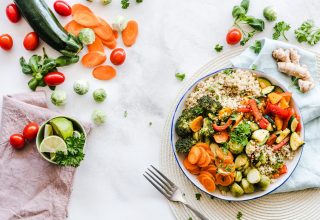Gluten is a kind of protein that is abundantly found in grains like wheat, barley, and rye and spelled. These grains and flour that is processed from them are used to make different kinds of foods such as pasta, cereals, and pasta. Gluten acts like a glue that holds the flour and gives it a sticky consistency when mixed with water. This consistency allows the bread to rise during baking and renders it a chewy texture.
When Does The Need Arise to Go Gluten-Free?
There are various diseases and disorders that restrict the use of gluten in a person’s regular diet. These conditions include;
-
Celiac Disease
This is an autoimmune disorder that is characterized by the progressive degeneration of the villi in the small intestine. This degeneration is triggered by the protein gluten that causes the damage of the interstitial lining. People suffering from celiac disease cannot tolerate even small amounts of gluten and even insignificant quantities such as 50 milligrams are enough to trigger the reaction. In celiac disease, a person needs to go gluten-free.
-
Non-Celiac Gluten Sensitivity
In this condition, the villi are not affected but the affected person is still gluten intolerant as the intake can lead to celiac-like symptoms like pain in the abdomen, bloating, diarrhea or constipation, headache and compels the individual to give up on gluten from their diet.
-
Gluten ataxia
This is again an autoimmune disorder which is characterized by problems in muscle control and voluntary movement due to the effect of gluten on nerves and signal transmission.
-
Wheat Allergy
Wheat allergy is similar to other kinds of food allergy in which gluten or other proteins found in the wheat are mistaken as a disease-causative agent by the immune system. As a result, the immune system generates custom monoclonal antibodies against the protein and a person suffers from congestion and other respiratory difficulties.
The best way to avoid triggering any of the aforementioned medical conditions is to completely avoid gluten and foods that contain it. Following is the list of foods curated on this page that contain gluten and can be the worst decision a gluten-intolerant individual needs to make.
Foods That Contain Gluten and Need to Be Avoided
Eliminating gluten completely from the diet can be a tricky business because it is a very common ingredient that is found in most of the food we consume on a daily basis. From wheat-based foods like wheat bran, wheat flour, semolina to grains like barley, rye and malt; these are the most common sources of gluten. On the other hand, foods that constitute ingredients containing gluten and need to be avoided as well include bread, pasta, baked foods, snacks such as chips, pretzels and popcorn, sauces including soy sauce, teriyaki, hoisin, and other salad dressings.
To sum it up, for gluten intolerant individuals, it is best to avoid processed eatables
and rely on single-ingredient foods and to read food labels properly before buying.
What Does A Person On Gluten-Free Diet Need to Look Out For
When opting for a gluten-free diet, it is important to understand the deficiency of this protein might lead to a deficiency of essential nutrients like fiber, folic acid, and iron.
-
Fiber
fiber facilitates digestion and prevents constipation. Since gluten-containing foods are a prime source of fibers as well and therefore it is important to replace these foods with other fiber sources to prevent deficiency of fiber.
-
Folic acid
Folic acid is important for the production of new cells and prevents the occurrence of birth defects and is therefore of supreme vital for women of child-bearing age. Therefore for such women, it is compulsory to obtain other sources in their diet to consume sufficient folic acid.
-
Iron
It is of common knowledge that iron is a component of hemoglobin and helps supply blood to the body. Foods such as meat, green leafy vegetables, and fish are an excellent source of iron and need to be incorporated in a diet that does not contain gluten.
How To Go Gluten-Free and Still Obtain Sufficient Nutrition?
Going gluten-free means being at bay from pasta, bread, pizzas, and even beer. However, as hard as it may seem, omitting gluten from the diet can be easy and fun if you know the right foods. For instance, beef, eggs, seafood, beans, nuts and seeds, fruits and vegetables are naturally gluten-free and can be cooked in a variety of delicious ways to continue with a gluten-free and healthy lifestyle.
For those concerned about omitting wheat, barley, and rye; the best replacement comes in the form of chia, flax, potato, rice, soy, sorghum, tapioca, corn, and millet. In addition spreads and oils that are purely made from vegetable and most beverages including beer if it is gluten-free can be safely taken by gluten-intolerant individuals.
However, apart from making modifications in diet, it is also important for a person to make some lifestyle changes as well like:
-
Patience
For instance, it is essential to remember that patience is the key. It is not easy to let go for a diet one is following for a long time and is definitely overwhelming and it can take a long time to adjust to the new dietary changes. However, with patience and perseverance, it is quite possible to live a healthy, gluten-free diet.
-
Positivity
Be happy about all the things you can still eat despite the gluten intolerance rather than being miserable about foods you cannot eat and it will definitely make an impact.
Benefits of a Gluten-Free Diet
A gluten-free diet is useful to treat digestive problems including bloating, gas, diarrhea, and constipation. It also reduced the chronic inflammation that is associated with celiac disease and prevents the occurrence of symptoms. Since celiac disease often tends to make a person tired and lethargic, a gluten-free diet helps to boost energy as it replaced the efficient nutrients that are otherwise lost by malabsorption. From aiding in weight loss to facilitating various body functions, there are many ways a gluten-free diet helps gluten intolerant individuals and makes life easy for them.













